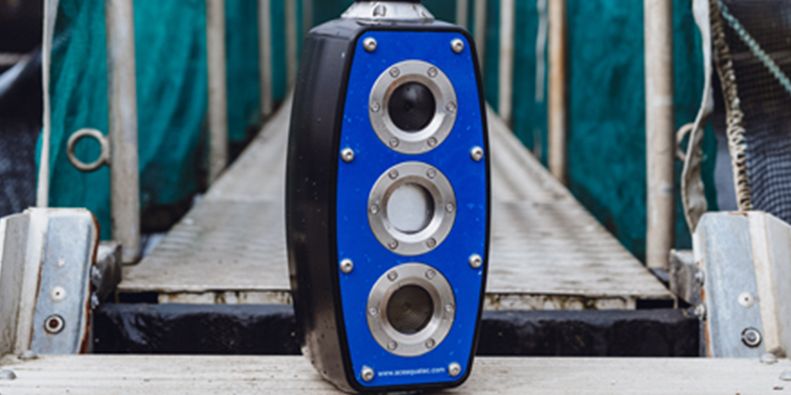Biomass camera an indispensable tool for fish farmers
06 February 2024

Ace Aquatec’s goal when developing a biomass camera was to create a product that would become the fish farmer’s friend, transforming the monitoring of salmon stocks with accurate, easy-to-use, and cost-effective automatic estimation. With A-BIOMASS®, launched in August, this ambition has been achieved and both farm staff and fish will benefit from its unique capabilities.
Biomass cameras play a crucial role in data gathering and provide an understanding of average fish weights in a pen, as well as fish weight distribution, which is critical to decisions around grading. Ace Aquatec’s camera hones this precision to within millimetres in a system that will revolutionise biomass data capture for fish farmers around the globe.
The A-BIOMASS® contains stereoscopic cameras calibrated to take images synchronously, identifying through machine learning and artificial intelligence (AI) fish and critical points, such as tail and fins, to measure fish length and height and therefore accurately estimate weight. It tracks multiple fish simultaneously, collecting significant amounts of data in a short period.
Image processing in real-time allows for accurate timings around when to grade or harvest fish; it can reduce feed wase by optimising weight classes in a pen; and it can be trained to be an early indicator of disease and sea lice levels.
Ace Aquatec Chief Technology Officer Keith Davidson, describing the underwater camera as the ‘first of its kind’, is confident it will ease the workload on farms.
‘To capture the average weight of the fish and their distribution in the pen manually is difficult and resource consuming, dependent on environmental factors and the weather, and often gives a poor representation of what’s in the pen. The sample rate, at best, is 100 fish per month, whereas our sample rate when we deploy the cameras is anything from 1,000 fish a day to 20,000 a day, constantly, regardless of the conditions.’
‘What’s more, the camera is a ‘plug in and play’ system, requiring no specialist skills to operate. It can be dropped in the water and then the surface box starts streaming data to our portal, which enables the farmer to see online what is happening without having to go near the pen.’
At just 8.5kg, the A-BIOMASS® is extremely portable while still designed to be robust enough for the most challenging marine environments.
‘The fact that it can be manoeuvred single handed is a massive plus on the farms,’ said Ace Aquatec’s Head of Digital R&D Donald Sutherland, who was at Aqua Nor in the summer for the product’s launch. It quickly became apparent at the show that the lightness of the camera makes an enormous difference to farmers. The system has been in development for five years, but it was only nine months ago that the research team replaced the large camera systems we had been trialling with something quite miniature.’
‘It was a significant development for us, made possible as new technologies became available, with much smaller cameras capable of having good clarity at depths beyond 10m.’
Another bonus is that the camera picks up reliable information over a short time frame, so can be moved from pen to pen after five or seven days. But the longer it is left in the pen, the more accurate the data will be, and ideally customers will install several cameras at farm sites.
The camera system is Ace Aquatec’s latest addition to its suite of high-welfare technology products and will help reduce the stress of fish handling.
‘The manual process of sampling disrupts the feed cycle, and ultimately impacts the harvest capability of the farm,’ said Davidson. ‘There is minimum disturbance with the camera and we also don’t use any exterior light sources, which can disrupt the fish too.’
As well as helping farmers optimise production, A-BIOMASS® could also be an indispensable tool in controlling disease and environmental challenges.
‘The way the camera works gives us the ability to detect anything that is visible, so we could extend its functions to identify behavioural or health related factors, for example, looking at movement or the condition of the fish,’ said Sutherland.
‘The system has the potential to do many other things, exploiting the existing technology and training the AI to pick up different criteria.’
And different species, too. Where at the moment, the A-BIOMASS® supports salmon and trout, 2024 will see the system’s expansion to support more species.
‘We’ve done extensive field testing and data collection with salmon to create a system that truly measures biomass and fits in with fish farmers’ daily processes and operations,’ said Davidson. ‘While we have geared the machine learning towards the detection of salmonids, the AI is now being trained to recognise the dimensions of different kinds of fish.


